Arid New Mexico versus the Columbia River Valley
An Emerging Sense of Place
Lesson: clarifying what authorities mean by words that describe attributes for settings, terrains, and places.
Arid New Mexico versus the Columbia River Valley
![]()
Start with visualizing | seeing dimensions | analogies | geometry | transfer of ideas | settings are | authorities | terms used | sources | Etymology | Vocabulary
Aldo Leopold's shack in Baraboo, Wisconsin; author of A Sand County Almanac.
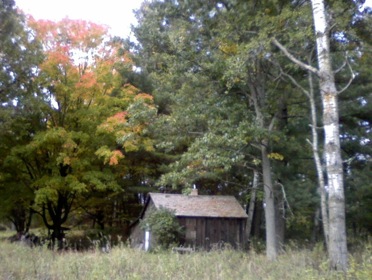 What is a place? any terrain with a recognizably distinct quality from another area.
What is a place? any terrain with a recognizably distinct quality from another area.
What do places consist of ? Most terrains or landscapes emerge from a geological past with prevailing climate and rainfall patterns shaping the geography due to weathering. Such conditions dictate to a great extent the native vegetation, fisheries, and wildlife.
How do historical alterations redefine places ? So many writers associate the cultural history with the topography and contours of landscapes but scenery, water features and changes in relief of any terrain is associated with a recoverable memory that distinguishes one extent of ground in a countryside or seaside from adjacent country, terrain or settings.
How do authorities define places?
Start with visualizing | seeing dimensions | analogies | geometry | transfer of ideas | settings are | authorities | sources | terms used | Vocabulary
Describe what you see above:
Compare that description
to the figure on this link from Gregory Bateson. 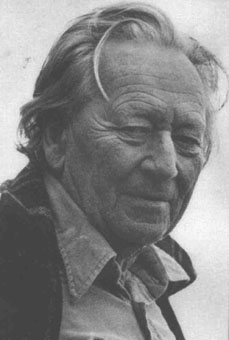
Start with visualizing | seeing dimensions | analogies | geometry | transfer of ideas | settings are | authorities | sources | terms used | Etymology | Vocabulary
![]()
Terrains possess volume because of the topography, contours, and features inherent in the land and watershed.
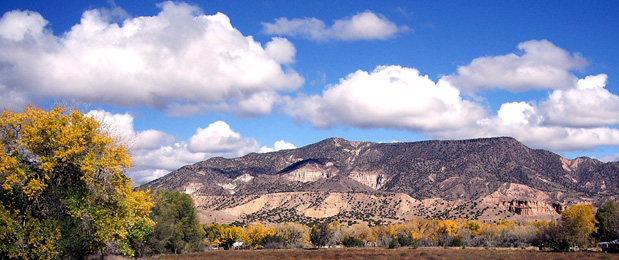
Champa River Valley in northern New Mexico, Fall 2009, [JVS].
 Every setting
is a composite
of dimensions.
Every setting
is a composite
of dimensions.
"Describing sense of place as a multidimensional construct representing beliefs, emotions and behavioral commitments they (Jorgensen and Stedman 2006, 316) argue that attitudinal approaches can better reveal complex relationships between the experience of a place and attributes of that place than approaches that do not differentiate cognitive, affective and connate domains."
Making Sense of Place: Multidisciplinary Perspectives, edited by Ian Convery, Gerard Corsane, Peter Davis. (2012). p. 3.
![]()
Length or extent is one dimension.
Width or breadth is a second dimension { squared 2 }
These two add up to the square footage or area of a space [acres or hectares].
Height or depth is a third dimension{ cubed 3 }
When added to the square of any space this reveals the volume or cubic measure of any space.
Surely any place is equally as complex, because places are made up of discrete features that contribute to identifiable and formative spaces that cohere into some discernible whole.
Start with visualizing | seeing dimensions | analogies | geometry | transfer of ideas | settings are | authorities | sources | terms used | Vocabulary
By analogy what are the three dimensions inherent in any room?
1) extension, 2) square footage, & 3) cubic measure.
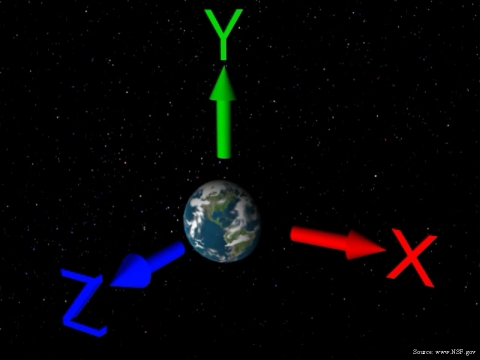 Mathematicians describe these numbers
Mathematicians describe these numbers
in analytical
geometry as
the three axes of Y, X, & Z.
Where:
Y is the vertical axis; and is a measure of linear extent,
X is the horizontal axis; and X times Y yields area,
Z is the diagonal axis; and area times Z yields volume.
Geometry is the study of abstract and comparative spaces.
Since geometry is useful and is derived from the Greek words for earth (geo) and measurement (metre), this subject is a good point of departure for us to define the components in determining the characteristics of a place and if it has a sense of place.
Are there any other dimensions?
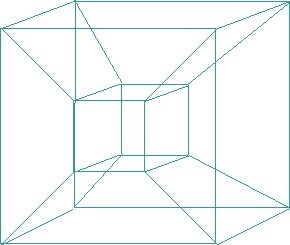
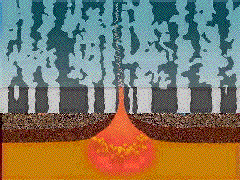

The tesseract above is an attempt to show another dimension since time is the fourth dimension that reveals land changes over decades, centuries, and aeons.
Start with visualizing | seeing dimensions | analogies | geometry | transfer of ideas | settings are | authorities | sources | terms used | Vocabulary
 Now apply the idea of dimensions of a cube
or room to the settings we encounter. Each setting, surrounding, landscape or
terrain has, at least three means to envision its importance to us as we define
places.
Now apply the idea of dimensions of a cube
or room to the settings we encounter. Each setting, surrounding, landscape or
terrain has, at least three means to envision its importance to us as we define
places.
By analogy each of the axes above are compared to a body of knowledge derived from inquiries that tell us about areas that are occupied on earth:
Start with visualizing | seeing dimensions | analogies | geometry | transfer of ideas | settings are | authorities | sources | terms used | Etymology | Vocabulary
Consider this forested bank of the Columbia River:
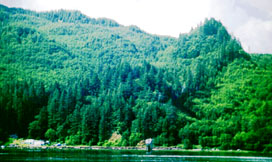
Every place is characterized by biological conditions, population density and ecological relations, over and above the actual terrain of geographical space or spaces that comprise discernible settings of all places.
Columbia River Gorge, looking east, upstream toward The Dalles, Oregon. The underlying volcanic origin of the landscape here was seriously impacted by glaciation over the last million years near the end of which a vast ice lake broke far upstream and moved a huge wall of water and debris through these mountain narrows, flooding present day Portland, Oregon.
Start with visualizing | seeing dimensions | analogies | geometry | transfer of ideas | settings are | authorities | terms used | Etymology | Vocabulary
All settings with respect to natural features include the following matrix of relations:
related concepts: |
water | energy | air | land |
| Biological | ||||
| Population | ||||
| Ecological |
Ecological relations among desert landscape, water, and seven elephants in Etosha National Park in Namibia, Africa
Start with visualizing | seeing dimensions | analogies | geometry | transfer of ideas | settings are | authorities | sources | terms used | Vocabulary
What do writers who are authorities on terrains and geography say about landscape beyond these features of places?
The Alhambra gardens from the past in southern Spain and the changing profiles of desert species in the future.
Interpreting place in geography requires:
A. Understanding the importance of history,
Site of the seven hills of Istanbul [Constantinople, Byzantium] at the confluence of the Golden Horn & the Bosporus, Turkey.
B. Working with and being conscious of different levels of spatial scale,
C. Dealing with and interpreting subjectivity
Sacred Valley of the Inca in Ollantaytambo, Peru.
![]()
definition | Making sense | rural
The concept of place "has also received considerable
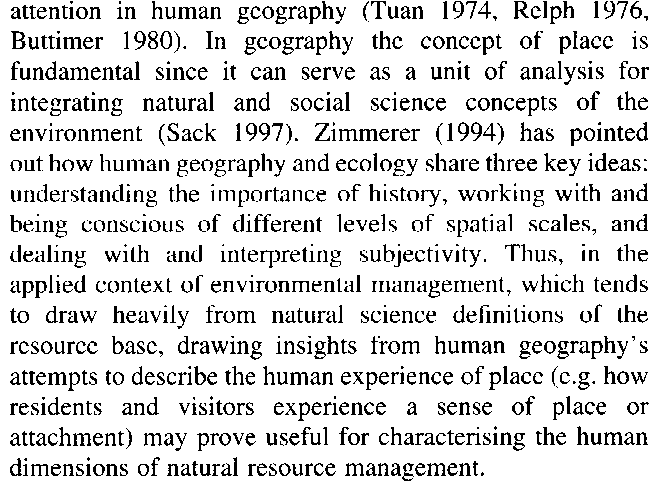
Kaltenborn and Williams ( 2002 ) "The Meaning of Place." Norwegian Journal of Geography. 56: 189-198. p. 189.
 Making Sense of Place: Multidisciplinary Perspectives, edited by Ian Convery, Gerard Corsane, Peter Davis. (2012).
Making Sense of Place: Multidisciplinary Perspectives, edited by Ian Convery, Gerard Corsane, Peter Davis. (2012).
"The general consensus of the authors is that the relationship between people and place is important for individual and community identity."
"Place, as distinct from space, provides a profound centre of human existence to which people have deep emotional and psychological ties and is part of the complex processes through which individuals and groups define themselves."
"Similarly, Teo and Huang (1996, 310), view place as an 'active setting which is inextricably linked to the lives and activities of its inhabitants. As such places are not abstractions or concepts but are directly experienced phenomena of the lived world.' Such a feeling may be derived from the natural environment, but is more often made up of a mix of natural and cultural features in the landscape and usually includes the people who occupy the place."
"This lack of a clear definition has led some commentators to argue that sense of place is an incoherent concept (Stedman 2003) with a chaotic literature (Jorgensen & Stedman 2006)."
p. 1.
" . . . there is no consensus on what the concept of sense of place should contain or how it should be constructed and measured scientifically'."
p. 2.
Thus across disciplinary experts there is little agreement as to what a "sense of place" really refers to. Some argue that it is an undefinable quality.
Two large bodies of scholarship split over whether the term refers to a "genii loci" and another group who argue that the concept of place is more a psychologically reassuring explanation of how people "experience, use, and understand place" and thus relate to a particular terrain.
pp. 2-3.
| What constitutes rural? | |||
| "A Continuous Multi-dimensional Measure of Rurality: Moving Beyond Threshold Measures" | |||
| Author: | Brigitte S. Waldorf, Ph.D., Purdue University | ||
| Issue Date: | 2006 | ||
| Series/Report no.: | Selected Paper | ||
| Abstract: | This paper introduces the Index of Relative Rurality, a continuous measure of rurality. The index is based on four dimensions: population size, density, percentage of urban residents, and distance to the closest metropolitan area. The index varies from 0 (most urban) to 1 (most rural). Compared to existing means of measuring rurality, the index is continuous and thus does not suffer from problems that arise when using arbitrary thresholds to separate discrete categories. This shift away from often ill-defined categories of rural and urban, to measuring the degree of rurality will shed new light on a wide array of rural issues ranging from rural poverty to economic growth. This paper shows that the Index of Relative Rurality makes an invaluable contribution to the debate on what is rural and what is urban. Three properties of the index are particularly beneficial for both research and policy:
|
||
definition | Making sense | rural
Carr | Mitchell | Williams | Jackson | Siry | Hundley | Austin| Walden Pond | D. H. Lawrence on Tuscany
Terminology for landscape
area - literally the square measure of a particular spot.
features - those descriptive characteristics of architecture that define or distinguish one thing from another.
habit - the characteristic behavior of living beings.
habitat - the technical term in ecology for the physical and chemical factors in an area or volume.
habitation - usually a human occupation of either a transient or permanent character.
place - verb – to put, insert, or set something into, onto, or around some other (usually larger) things. Order, orderly arrangement of things in a recognizable relationship.
setting - the stage upon which or in which events happen.
space - abstractly a three dimensional void that may be filled or empty, actually a plot or occupied spot . . . the physical volume or area of a bounded plot, or enclosure. See space.
territory - from the Latin word for earth, terra, the range or physical space occupied by a living thing.
weal - an acronym for water, energy air and land representing the four types of conditions of any habitat, derived from the Indo-European root weald, meaning, in old English, a forest. (wealth)
Rare words for landscape features.
Loss of vocabulary for landscape.
Start with visualizing | seeing dimensions | analogies | geometry | transfer of ideas | settings are | authorities | sources | terms used | Vocabulary
Some other words | Analogies | Photographs of places | Planning Indices
Jackson | Thoreau | D.H. Lawrence | Open Space of Democracy | Williams | Gerald Durrell | Pacey | Siry | Hundley | Austin